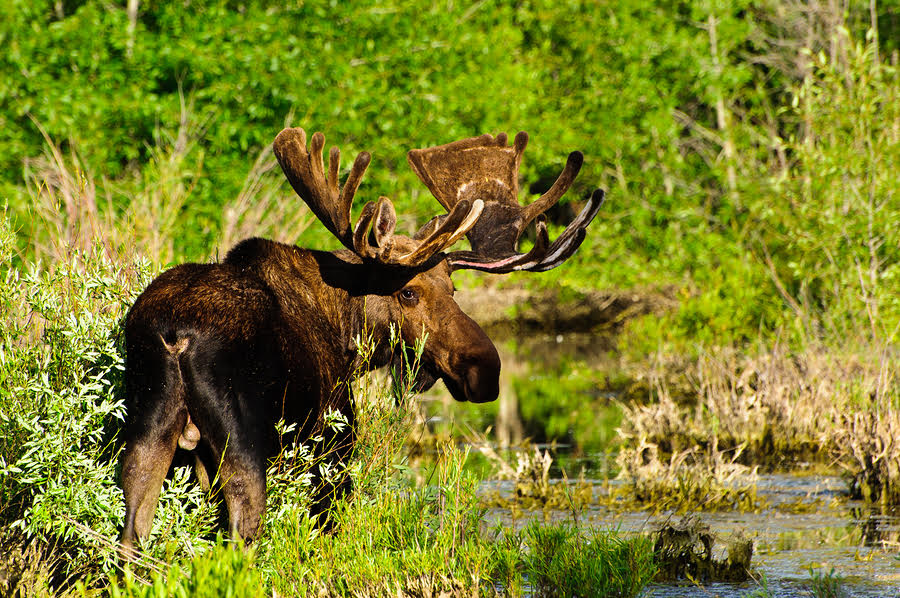From Sportfishing
Fish Report for 2-9-2017

Jackson moose decline; big game managment
2-9-2017
Ryan Benson
Moose in Jackson Hole, Wyoming are in serious trouble. Before wolves were introduced into Yellowstone, there were 3,000 to 5,000 moose in Jackson. Today, less than 20 years after the experimental wolf introduction, there are less than 500 moose left. This is a true American conservation nightmare.
As one of the most important and iconic Shiras Moose populations in world, protecting and restoring moose in Jackson is critical to their survival. In the early 1900’s, when moose became extinct in most areas across the American West, it was the Shiras Moose from Jackson that were used to restore extinct populations. Considering the importance of Jackson’s moose to saving the species in America, it is unacceptable what 20 years of wolf mismanagement has done to this vitally important moose population.
Why is this happening? Though wolf recovery objectives in Wyoming were reached 12 years ago, lawsuits by anti-sportsmen activists and animal rights groups have prevented Wyoming from having the legal authority to manage its wolves.
Five years ago, Congress acted to restore wolf management authority in Idaho and Montana. Wyoming was left off the list. At that time, there were still 1,000 moose left in Jackson. Since then, OVER 50% of moose in Jackson have disappeared. The Jackson moose viewing festival was cancelled several years ago. The Jackson moose hunt, which annually supported 500 permits, is now down to approximately 10 permits. This has not stopped the decline.
One scientific study shows just how dire the situation has become for moose populations in Jackson:
This population is 88% below its postseason management objective. Native moose populations naturally expanded and colonized the Jackson area in the late 19th century. The species’ arrival was followed by a classic exponential population increase, peaking at approximately 3,000-5,000 animals (depending on modeling techniques). For many years, the Jackson Herd served as a source for moose transplants in multiple states and supported nearly 500 hunting licenses. However, the population underwent a dramatic population crash beginning in the early 1990s. Despite drastic reductions in hunting licenses, the population has failed to recover and continues to decline.” (Houston 1968, Berger 2004, Becker 2008, Vartanian 2011)
Now is the time to protect and restore moose in America. Without responsible and timely predator management there will not be enough young moose to restore these populations to their former greatness.
Please watch for future emails and action alerts from BigGame Forever in the coming weeks. The time is approaching when we will ask for sportsmen to unite in an effort to recover America’s moose populations that have been so dramatically impacted by unmanaged and undermanaged wolves, grizzly bears, and other predators.
Thank you,
Ryan Benson
President and CEO
BigGame Forever
BigGame Forever is a non-profit membership organization of conservation-minded sportsmen committed to protecting the future of our outdoor heritage. BigGame Forever allows hunters and fishermen from around the United States to speak with one united voice to promote the protection of abundant wild game and the right of sportsmen.
< Previous Report Next Report >

Website Hosting and Design provided by TECK.net